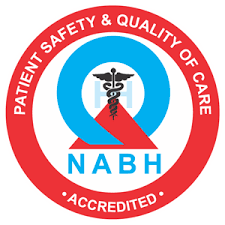Coronary angiography is a diagnostic procedure performed to check the blood flow and presence of any obstruction (blockages) in coronary arteries that supply blood to the cardiac muscles.
How Coronary Angiography is done?
This procedure is done through the radial artery that is present in the wrist and the femoral artery (thighs). Anyone location is chosen to do this procedure. The sheath is placed within the artery using a needle. A tube-like structure known as the diagnostic catheter is passed through the artery towards the aorta ( the biggest blood vessel arising from the heart). The end of the catheter is placed at the opening of the arteries and a contrast dye is injected into the coronaries.
At the same time, fluoroscopy is done which permits the visualization of the flow of the dye through the coronaries and can be seen on a screen. Fluoroscopy uses X-rays to visualize the coronaries. Images are then acquired at different angles to get a complete idea of the coronaries. The catheter is removed along with the sheath from the artery. The wound is then dressed and heals with proper post-care.
Is it painful? Does it create a wound?
A small puncture hole on the skin about 2 mm in diameter is created using a needle puncture. It is done under local anesthesia and does not require any stitches. When properly done it is painless and all that is felt is a tiny prick of the needle.
Does it require admission to the hospital?
It can be done as an out-procedure and the patient can go home on the same day itself. Usually, patients can be discharged after 4 hrs when done via the radial artery and 6 hours when done via the femoral artery.
Is it a dangerous or life-threatening procedure?
It is a relatively safe procedure and needs to be done only by an expert. As it is an invasive procedure, complications may arise depending on various factors involved in a patient’s medical history. Some minor complications that may arise include hematoma at the puncture site, vasospasm, minor allergic reaction to the dye. Very rarely, life-threatening complications like myocardial infarction, arrhythmias, anaphylaxis, stroke, renal failure, or death may occur. However, these are extremely rare cases and occur in less than 1% of patients.
Can coronary angioplasty be done immediately after angiography?
Yes. Angioplasty which involves stenting the blockages seen on angiography can be performed immediately after angiography depending on the clinical circumstances.
Check out our recent blog – https://www.saideephospital.com/2020/11/29/vision-impairment-cases-rise-during-the-pandemic/
Stay tuned for regular heath updates – https://www.instagram.com/saideephealthcareofficial/


